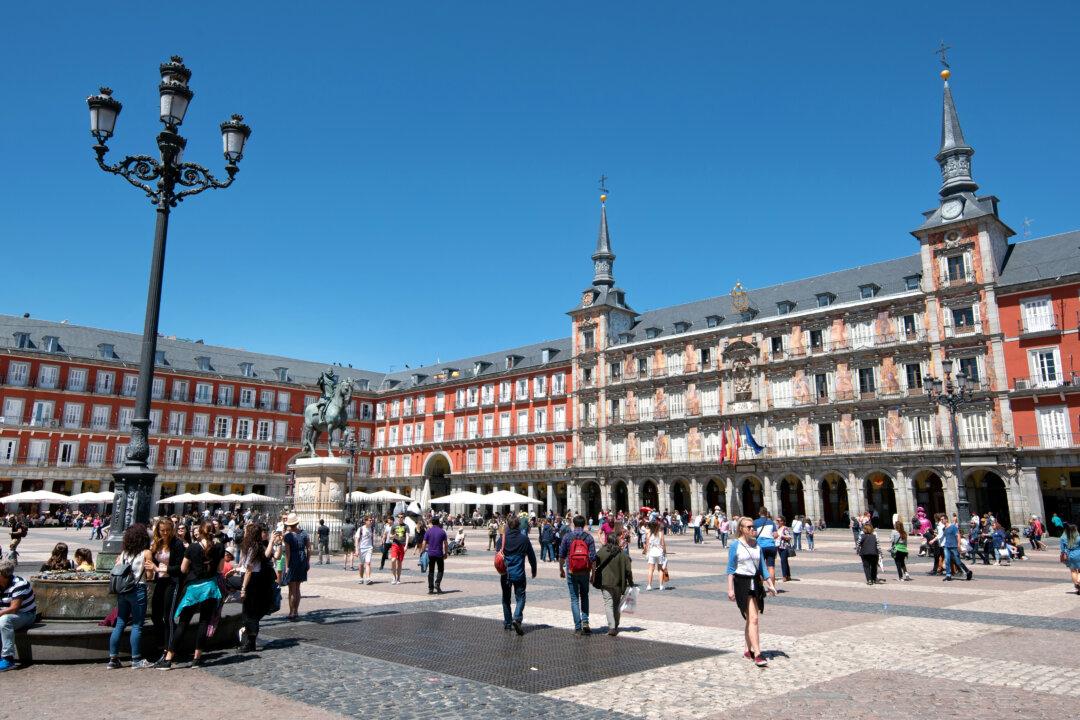Vernazza’s strollable breakwater creates a little harbor, rare on this rugged Italian Riviera coastline. Grabbing a comfortable hollow in a boulder on the tip, I study the arrangement man and nature have carved out here over the last thousand years. Crumpled hills come with topographical lines: a terraced, green bouquet of cactus, grapevines, and olive trees.
With a closer look, I notice that the hills silently simmer with activity. Locals tend their vines and hikers work up a thirst for the white wine these hills produce. It’s autumn and the grape pickers’ tiny train — the trenino — is busy ferrying grapes down into town from the highest terraces. This single silver rail line runs perpendicular to the terraces, scaling the hillside like a rock climber’s rope.
Vernazza has two halves — in each half, every building is connected with every other building. These clumps of humanity are separated by one main street, which the townsfolk created by paving over the stream that carved out the ravine upon which the town was built. It’s a commotion of pastel with dark stepped lanes and dank tunnels winding like veins on a leaf up each hillside until the buildings meet the vineyards.
Below my rocky perch, a fisherman cleans his nets. The cool mist that follows each crashing wave reminds me how easily this breakwater is conquered during winter storms. High above the breakwater, at the base of the castle, is a restaurant called Il Castello. This pricey place was my private little splurge back when I stretched my money by choosing popsicles over gelato.
Vernazza feels populated by descendants of the pirates who plundered this coast. But Lorenzo, who ran Il Castello, was a rare Vernazzan who didn’t take advantage of tourists held captive by his town’s beauty. He’d sit me down under an umbrella with the most commanding view in town. And with the love of a small-town priest, he’d put a cookie next to my glass of cool, sweet sciacchetrà wine, and say, “Rest here. The view is nice.”
Cancer took Lorenzo quickly one winter. Now he’s king of the Vernazza mountain. He’s resting and enjoying the best view of all from a different kind of hotel, booked out by locals for years: the hilltop cemetery.
Leaving the harborfront, I climb the steep, stony staircase up to Il Castello. Monica, Lorenzo’s daughter, who runs the place now with her husband Massimo, greets me warmly. Her black hair backlit by the sun, she seems to have an aura. Her penetrating eyes seem to really see me. She has Barbra Streisand lips and a bony nose. In her caring face I see Lorenzo, as if he were still standing there with a nice bottle of sciacchetrà.
I tell Monica that I’ve been thinking about her father and she suggests we visit the cemetery. Hiking through narrow back alleys that smell of damp cats, we reach the lane that leads uphill to the cemetery. After a funeral Mass, the entire village spills out of the church and trudges darkly up this same route. It’s been a sad ritual for generations here in Vernazza.
At the top of the lane, a black iron gate is open. Inside, the cemetery is fragrant with fresh flowers. Quiet pathways separate marble walls of niches, stacked five high. Walking down a lane closest to the sea, Monica explains that coffins are not put into the ground but slid into a loculo. Squinting at a wall of niches, reflecting bright white in the late-afternoon sun, I review names and dates carved into the marble. Each niche is wired with a minuscule light and comes with a built-in vase. And next to each vase is an inset oval window filled with a black-and-white portrait.
Stepping around a rolling ladder — left out for loved ones with flowers for those resting on the top row — Monica arrives at her father’s loculo. She leaves me long enough to cross herself. Then, turning toward the sea, Monica sits on a flat rock just big enough for two. Patting the other half of her perch, she invites me to sit down. She doesn’t know it, but it’s as if to say, “Rest here. The view is nice.”
We ignore the red tiles, flapping laundry, and tourists lounging on the breakwater below. From here, enjoying what we call “Lorenzo’s view,” the world is peaceful green and reassuring blue, blending the sea and sky. To the left and right, I pick out each of the Cinque Terre towns along the coast. Each is alone in the world — seemingly oblivious to the march of time. I wonder what could possibly improve the setting. Then the church bells ring.





